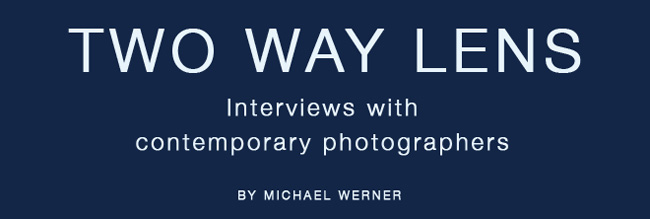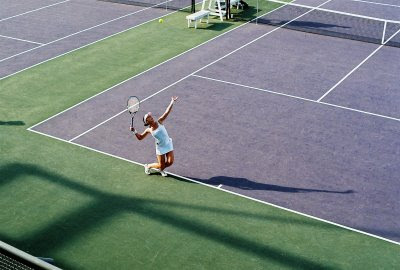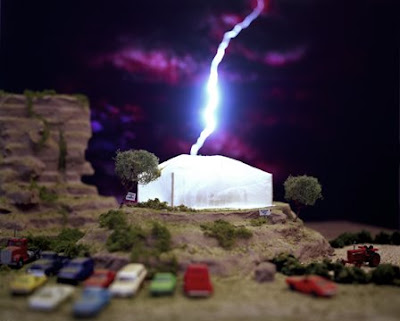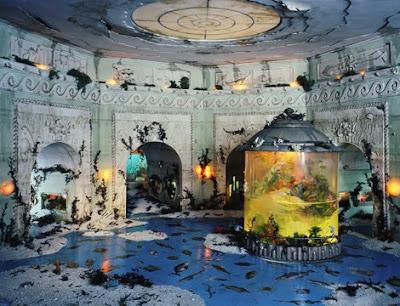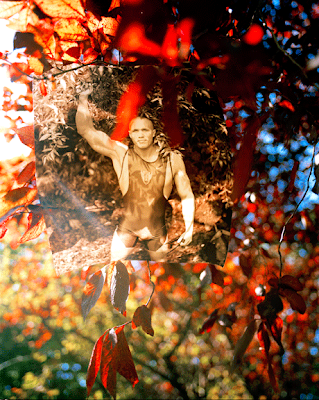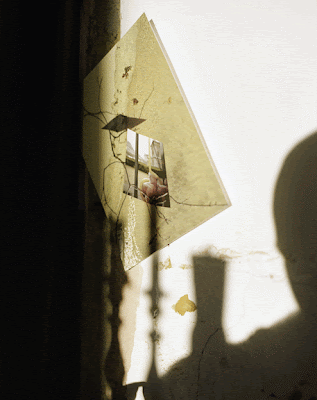MW
What inspired you to start taking photographs, and what is the primary inspiration for you to keep working in this field?
AP
I was first attracted to the science of photography. As a teenager I used to love to feel the weight of that big F2 dangling from my hand, strolling the desert, looking for motifs that I had seen before and come to recognize as “good” photographs. If I looked through the viewfinder and saw something that I thought I had seen before, on a calendar, in a magazine, on a poster, then I new it had to be good and worthy of photographing. In contrast to now, I loved talking about f-stops, film speeds and lens focal lengths. Living in the Southwest, the landscape is such a powerful force yet loaded with preconceptions of what it should look like. I was constantly chasing these preconceptions in the summer and photographing wrestling matches for my high-school yearbook during the winter. The satisfaction came from finding the right solution to the problem; making the picture what was “expected.”
It wasn’t until my time at ASU, studying with people like Bill Jay, Bill Jenkins and Tamarra Kaida that everything changed, and in such a monumental way that I still, 16 years on, am content with the struggle of trying to get my mind around what I spend my time doing. I started the photo program so sure of myself because I had all the gear and a nice picture or two to show, but nothing can prepare you for the moment you see the works of Diane Arbus, Walker Evens, Robert Frank and co., and have someone like Bill Jenkins tell you, in one simple sentence, almost as if in passing, that there is a monumental difference between “subject matter” and “content”. If I got nothing out of my studies, or to put it better, if I could break it down to one essential moment, it would be the realization that a photograph is not a documentation of reality, and it is most definitely not about the “thing” in the viewfinder.
So, to answer the question, I was using my camera for years before I was motivated to start taking photographs. I got into it because I liked the safety in knowing that it was pure science – a technical craft that could be controlled and defined by the laws of physics. I have stayed interested because I still can’t tell you why a photograph is successful.
MW
In your opinion and experience, how can emerging photographers evaluate themselves as ready to start promoting their works and seek broader exposure for their photographs? What is one vital action you would recommend photographers undertake to find their audience, be included in exhibitions, and gain professional representation?
AP
I think it is very important to spend a lengthy amount of time with a body of work. Just how long is tough to say but I believe each photographer can feel it for themselves. For me it has always been an important step in any body of work to start eliminating photographs. Images that at one time you thought were your strongest. The difference involved with putting together a group of images over time, as opposed to chasing the single interesting photo, is the distance that you gain to the images. Adding the element of time, such as revisiting a series each week for a year or two, adding to the pile and paying attention to how the images relate to one another gives you distance from and insight into your work, and insight into one’s own work is a major challenge for photographers early on in their careers. Photography is constantly becoming quicker and quicker and there is a certain danger in confusing the emotions of making the image for what is actually in front of you later on the print. So often I look through photos that someone has asked me to critique or comment on and I am amazed that some of these people often have little understanding of their own work, and most importantly how to edit their own work. Build on a series long enough to the point that you toss out images that were once essential and you will be getting close to a tightly edited body of work.
In the pursuit of galleries, shows, publications and representation, the most important factor for me has been traveling. I have worked as a curator and member of the Galerie Fotohof for the last 15 years and I can say with absolute certainty that no one has ever gotten a show by walking through the door with a fancy leather portfolio under their arm, nor by sending a CD in the mail. In fact a CD in the mail is maybe the quickest road to the garbage can; too many steps involved to get to the work and there isn’t any work out there that looks good at 72 dpi. Almost everything good I have going for me as far as galleries and publishers is concerned is the direct result of traveling and meeting people. It is the traveling and going to openings and meeting people that lead to the real relationships, and there is so much high-quality work out there that the gallery owners and publishers have to make their decisions based on something other than just good work. Personal connection, in these days of superficial email based communication, is highly respected and valued. I would, and have in the recent past, suggest to younger photographers to take the money they would spend on a portfolio and buy a plane ticket to Paris Photo or Arles or Houston Photo Festival and meet people and find galleries and publishers that you think might be interested in your work. It happens so often that people show me their work and I have to ask them if they know what I do and what I am interested in, both as photographer and curator, because the work is something I can’t begin to offer something in return on, not because it is necessarily bad, but because it’s just so far from what I relate to. This only tells me that they haven’t defined the work for themselves either.
MW
How did it come about that you achieved the status of successful, professional photographer? What steps were involved in reaching your level of success?
AP
There must be some great quote to sum up the answer to this question. The only one which comes to mind, but I repeat it with reserve because I never quite got it myself, was from Nathan Lyons, who said, I think, “fame is a cup of warm spit”. Brilliant yet completely useless to me, maybe that’s the message in itself. Success in a field like art photography is so relative. Each of us measures it with a different ruler. For me success is when an image or a body of work come together in a way unlike I had hoped, and when I can step back and say to myself “interesting, but how about trying this…?” and then move on to the next work. The most successful work you will do is the work that leads you to the next body of work. Yes, I have reached a certain level of success, but so much of it is based on my fellow photographers, critics and art directors, and sometimes by those I have admired and been inspired by and their ability to recognize what I do and call it good. How shallow is that? By the time a certain image makes its way into the wider world beyond my studio, I am usually onto the next thing, and so the praise that may come is nice, but seems as valuable as, well, a cup of warm spit. Under the same token, the negative critique also slides off as easily. I value much more the words and thoughts of a handful of close friends than all of the art critics combined.
I am avoiding the actual question because the answer is rather boring, at least my take on it. It sounds so trite, but hard work and persistence will put you in the 98 percentile right away. The other 2% is probably timing. You may be producing a work that is exactly what you need to be doing at the time, but it might not fit into the current themes and trends. It is so easy to see right through a work which is made out of speculation.
Unfortunately, the above mentioned group of friends can’t pay my rent, so I keep up the fight as best I can, which means investing all of my time not spent behind the camera or in the lab to traveling, writing and trying to get my work out there. That may be the toughest part of all, getting the work out there. Whenever I feel tripped up by all of it, I think of the words a collector once told me: “you can’t keep a good work secret”. Success, either financially or in the form of respect from your peers, does make working and moving on to the next work easier, and that is what it is all about; making the next picture.
 Andrew Phelps, from HIGLEY, 2007l
Andrew Phelps, from HIGLEY, 2007l
 Andrew Phelps, from HIGLEY, 2007
Andrew Phelps, from HIGLEY, 2007
 Andrew Phelps, from HIGLEY, 2007
Andrew Phelps, from HIGLEY, 2007
 Andrew Phelps, from HIGLEY, 2007
Andrew Phelps, from HIGLEY, 2007
 Andrew Phelps, from HIGLEY, 2007
Andrew Phelps, from HIGLEY, 2007
 Andrew Phelps, from BAGHDAD SUITE, 2008
Andrew Phelps, from BAGHDAD SUITE, 2008

Andrew Phelps, from NATURE DE-LUXE, 2004
© all images, Andrew Phelps
 West Point, New York, from The Last Days Of W
West Point, New York, from The Last Days Of W Priscilla, Los Angeles, California, from The Last Days Of W
Priscilla, Los Angeles, California, from The Last Days Of W Chula Vista, California, from The Last Days Of W
Chula Vista, California, from The Last Days Of W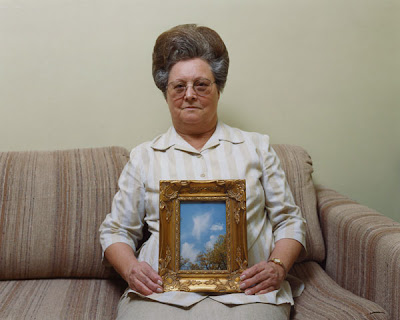 Bonnie (with a photograph of an angel), Port Gibson, Mississippi 2000, from Sleeping By The Mississippi
Bonnie (with a photograph of an angel), Port Gibson, Mississippi 2000, from Sleeping By The Mississippi Venice, Louisiana 2002, from Sleeping By The Mississippi
Venice, Louisiana 2002, from Sleeping By The Mississippi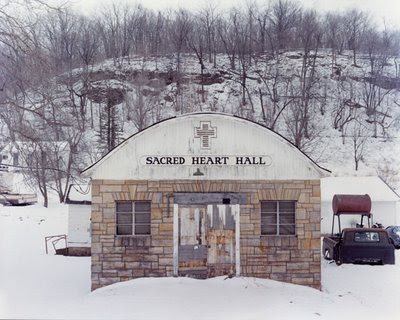 Sacred Heart Hall, Green Island, Iowa 2002, from Sleeping By The Mississippi
Sacred Heart Hall, Green Island, Iowa 2002, from Sleeping By The Mississippi Jane, from Fashion Magazine
Jane, from Fashion Magazine Ashley & Kelly, from Fashion Magazine
Ashley & Kelly, from Fashion Magazine Tricia and Curtis, 2005, from NIAGARA
Tricia and Curtis, 2005, from NIAGARA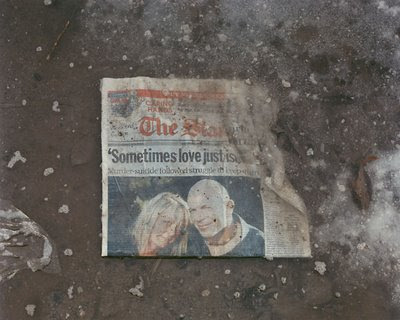 Newspaper 2005, from NIAGARA
Newspaper 2005, from NIAGARA Gus's Pawn Shop 2004, from NIAGARA
Gus's Pawn Shop 2004, from NIAGARA The Seneca 2004, from NIAGARA
The Seneca 2004, from NIAGARA